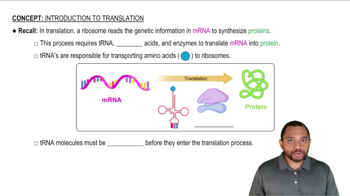Alpha-melanocyte stimulating hormone (α-MSH) is a 13-amino-acid peptide hormone responsible for pigmentations in hair and skin. Its peptide sequence is shown.
SYSMQHFRWGKPV
c. Suggest a complementary template DNA sequence based on the mRNA sequence suggested in part b.






